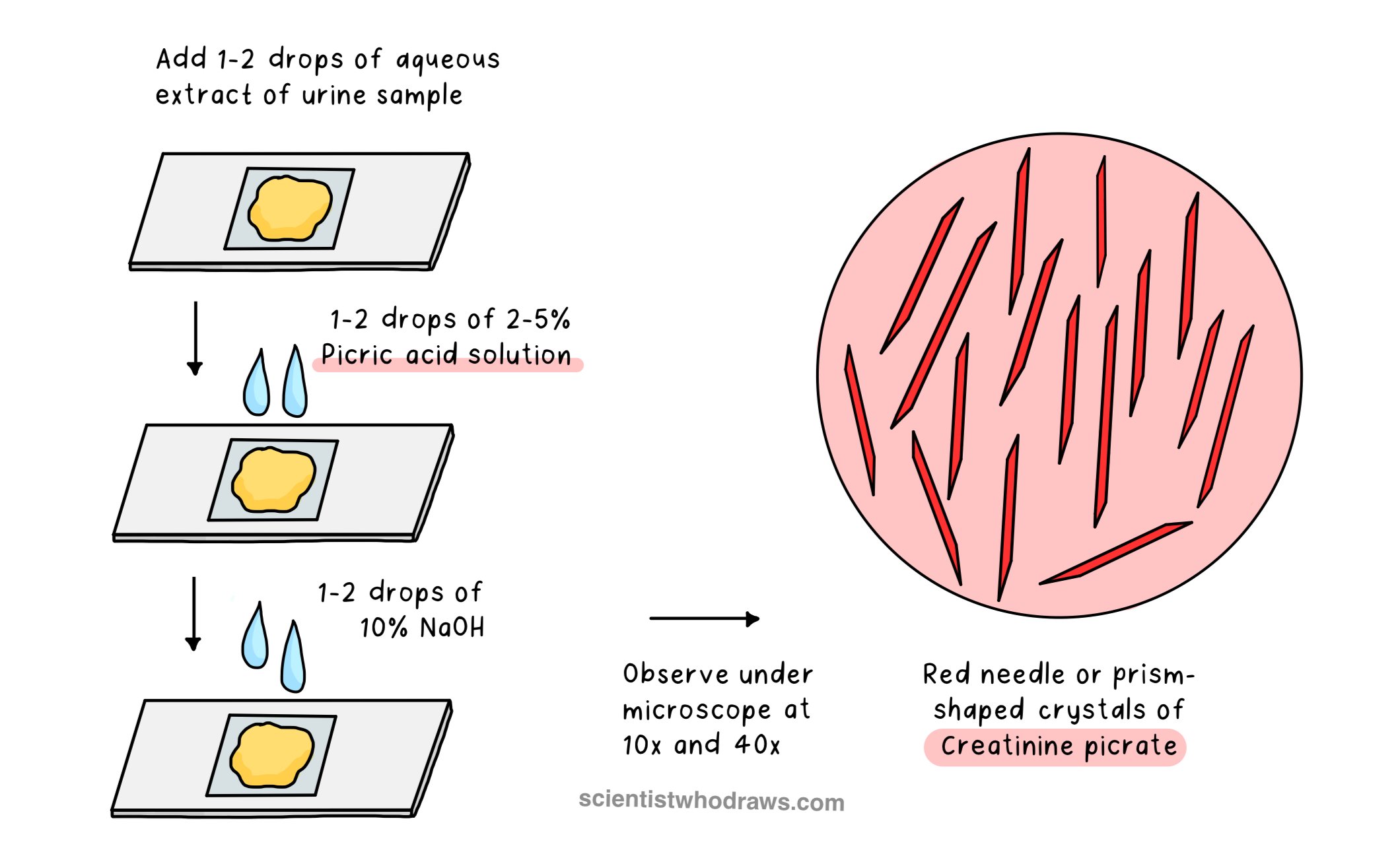Preliminary tests for Urine
Preliminary tests for the detection of urine typically involve a combination of physical examination and chemical analysis. Physical examination may include looking for the presence of urine stains with the naked eye or with the help of various light sources, as well as detecting odour. Chemical analysis may include the detection of enzymes, such as urea, creatinine, etc. that are present in urine.
PHYSICAL EXAMINATION
Colour and Appearance
The colour of urine stains can vary depending on several factors, including the amount of time the stain has been exposed to the air, the concentration of the urine, and the type of surface the stain is on. Fresh urine stains typically appear yellow or light amber. As the stain dries and ages, it may turn darker in colour and eventually become brown or orange. Dried urine stains can be difficult to see on certain surfaces, especially if the surface is dark or the stain is old.
Fluorescence
Investigators may use various light sources to enhance the visibility of urine stains, such as ultraviolet light, which causes the urine to fluoresce and appear as bright yellow or green.
Odour
The odour test for urine is a simple and quick method used in forensic analysis to identify urine stains. This test relies on the characteristic odour of urine, which is caused by the presence of ammonia and other volatile compounds. Once the urine stain has been located, a small amount of water or heat can be applied to the area. This helps to release the volatile compounds that cause the characteristic odour of urine. This odour is often described as pungent, ammonia-like, or musty.
CHEMICAL EXAMINATION
1. Urea Nitrate Crystal Test
The urea nitrate crystal test is a commonly used test for the forensic identification of urine stains. It is based on the detection of urea present in urine, which can react with nitric acid to form urea nitrate crystals.
Figure: Urea nitrate crystal test for the detection of Urine
✏️ Procedure:
Take 1-2 drops of watery extract of the suspected urine stain on a slide.
Add 1-2 drops of concentrated nitric acid (HNO3) from the sides and allow it to mix slowly under a cover slip. (Note: Be cautious while handling nitric acid, as it is a strong oxidizing agent and can cause burns or other injuries)
Observe under a microscope at 10x and 40x. The presence of yellow-colored, diamond, or hexagonal-shaped crystals of urea nitrate indicates the presence of urine.
2. Creatinine Test or Jaffe’s Test
The creatinine test or Jaffe's test is a simple and reliable method for identifying urine stains. This test detects the presence of creatinine in urine, which reacts with picric acid to form bright red crystals of creatinine picrate.
Figure: Creatinine test or Jaffe’s test for the detection of Urine
✏️ Procedure:
Take 1-2 drops of watery extract of the suspected urine stain on a slide.
Add 1-2 drops of 2-5% picric acid solution.
Add 1-2 drops of 10% sodium hydroxide solution (NaOH). NaOH raises the pH of the solution to an alkaline level, which promotes the formation of the creatinine-picric acid complex.
Observe under a microscope at 10x and 40x. The presence of bright red-colored, needle or prism-shaped crystals of creatinine picrate indicates the presence of urine in the suspected sample.
FALSE POSITIVES OF PRELIMINARY URINE DETECTION TESTS ❌
Semen or vaginal secretions may also contain urea and creatinine, potentially producing similar crystals. Additionally, other compounds such as ketones and ascorbic acid can interfere with the tests and produce false-positive results. Therefore, it is important to confirm the results of these tests using other confirmatory tests.


